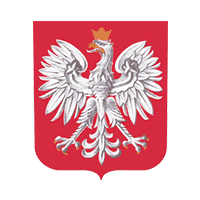Zygmunt BIAŁAS
In the 20th century, until approx. 1980, the Cieszyn area was the largest stone field in the Silesian Beskids. This is where sandstone used in the construction industry, in road construction (among others in Ustroń and Wisła) and in stone masonry (Brenna) was mined. The Godula layers (upper Cretaceous) provided abundant material, particularly sandstone. Sandstone mined from the lower Godula layers was used in road construction, whereas sandstone from the middle layers - in the construction industry, particularly in stone masonry, and sandstone from the upper layers - in local construction projects. After a time of prosperity, the number of active open-pit stone mines decresed. Currently, sandstone is mined in Wisła Obłaziec and in Brenna only. From among 14 sandstone deposits documented for the Cieszyn region, only seven are actually mined: in Wisła-Obłaziec, in the “Gahura” quarry, and in Brenna, in the “Beskid”, “Cisowa”, “Cisowa 1”, “Głębiec”, “Kormany” and “Tokarzówka” quarries. Long-decommissioned Godule sandstone quarries are located in Ustroń, Brenna and Wisła. The majority of them was naturally “reclaimed” by the natural world. Their small ledges were completely overgrown, and their initial shape was obliterated. Larger pits are still recognizable, although they are now overgrown with large trees. They are however often hidden deep in the woods, entirely forgotten. Yet, the former open pits could become a geo-tourist attraction of the region, and a part of them, such as the: “Czantoria”, “Szwarc” and “Równica” pits in Ustroń, or “Kończakówka”, “Jatny” and “Jarząbek” pits in Brenna, and “Jonidło” - in Wisła, deserve to be protected by establishing a documentation site. They are important for conserving the geo-diversity and cultural heritage of the region.
Zbigniew RAWICKI, Czesław KOCZYBA
Comparative analysis of the findings of commissions, appointed by the President of the State Mining Authority in the years 2002–2014 after accidents and disasters in the underground coal mining plants shows that the causes of these events (mainly methane fire and coal dust or methane explosion) were similar and still the same: the rise of fire or methane hazard, the lack of prevention, interfering in the sensors of automatic CO-metry and methanometry, mining works under conditions of endogenic fire or higher than permissible level of CH4 concentration in the ventilation air.
Grzegorz PELON, Stanisław GIL
This study contains an index analysis of the number of accidents, determining the mid-term rate of change, predicting the number of accidents in a random year and forecasting the number of accidents according to different econometric models until 2020 year for data from selected coal mine from years 2007–2016. Frequency and severity of accident rates were estimated and the average rate of change of the analysed variables was determined. The prediction of the accidents number in a randomly selected year was based on the Poisson probability distribution density. Twenty forecasting models were used to predict the number of accidents, of which the forecast by the creeping trend method using harmonic weights gave the best results.

